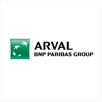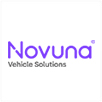When you first start on your EV journey you should read up on the public charging network around the area you're most frequently driving within. If you generally charge at home, you should still be aware of the infrastructure around you as you never know when you might need to access a public charger.
Finding a charging point
One of the most comprehensive apps for finding a public charge point within the UK is Zap-Map, which has been around since 2014. It has over 14,000 locations and monitors 24,000 devices and 40,000 connections. The great thing about this app is that it has both the major networks and smaller providers, so it’s super handy, rather than downloading dozens of individual apps. The app states that around 70% of the units it monitors shows live availability every 5-minutes, so if you’re on the move and looking for a charger nearby, you’ll be able to easily find one that is available.
Type of public charger
There are generally three types of public charger, from slow (7kWh) to fast (20kWh) and rapid (43/50 kWh). You should note however that your car is limited to the maximum charge rate it can take. As such, if your DC charge rate is 50kW then it can only receive this - even if on a 150kW charger.
Paying for public charging
The payment process can seem confusing when you first adopt an EV as there are so many different networks available to you. Costs vary greatly between public charging points, from free (local authority covers the cost to promote EV life and encourage a greener mobility) to 45p per kWh at the higher end. Generally, when it comes to payment, there are three different forms:
- Contactless payment: For operators that are more commercial, contactless payment is generally the easiest to use. You simply follow the instructions on the charging unit, press your contactless card to it and the car will start to charge. You’ll see how much you’ve spent, on screen, as it’s charging. It’s worth noting though that you won’t receive a physical receipt printed out at the unit – so check with your HR team when it comes to claiming expenses!
- RFID Card (Radio Frequency Identity Card): These cards allow access to multiple networks, but it’s often dependent on the local authority or the deals that different providers have. For example, north of the border ChargePoint Scotland offer an RFID charge car which allows users to access their full network. Charging costs can vary depending on the local authority, with many historically free units now charging a small fee per kWh.
- In-App purchase: Some networks (such as BP Pulse) may require you to download an app, create an account, and connect a payment method prior to use. Be careful if you’re using a charging unit in a petrol station that requires this, as mobile use on forecourts is not allowed due to health + safety.








